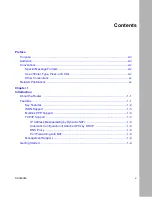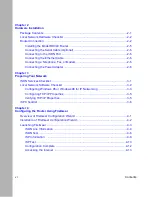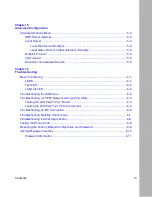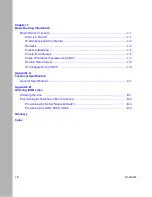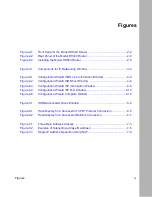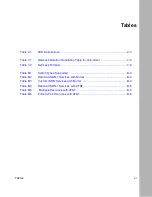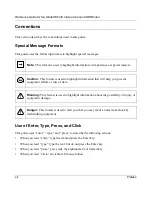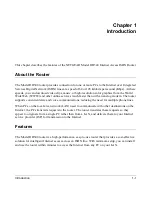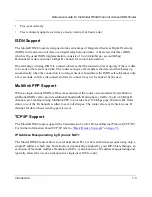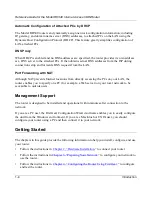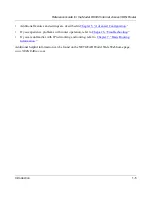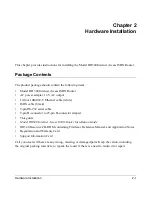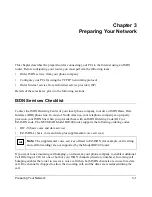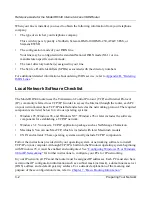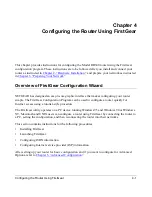
Reference Guide for the Model RH340 Internet Access ISDN Router
Introduction
1-3
•
Five-year warranty
•
Free technical support seven days a week, twenty-four hours a day
ISDN Support
The Model RH340 router is designed to take advantage of Integrated Services Digital Network
(ISDN) for transmission of data over digital telephone networks. A basic rate interface (BRI),
which is the usual ISDN implementation, consists of two 64 kilobit per second (Kbps)
B channels for data and one 16 Kbps D channel for control information.
One advantage of using ISDN to connect routers is that the connection is set up only if there is data
to be sent to the remote network. The router sets up a call, transfers the data, and then hangs up
automatically when the connection is no longer needed. In addition, the ISDN call setup takes only
a few seconds, so that a disconnect and later reconnect may not be noticed by the user.
Multilink PPP Support
When a single-channel ISDN call becomes saturated, the router can automatically establish an
additional ISDN call to provide additional bandwidth. During heavy traffic, the two 64 Kbps B
channels are combined using Multilink PPP to provide a fast 128 Kbps pipe. When traffic slows
down, one of the B channels is idled to save toll charges. The router also reverts back to one B
channel for data when an analog port is used.
TCP/IP Support
The Model RH340 router supports the Transmission Control Protocol/Internet Protocol (TCP/IP).
For further information about TCP/IP, refer to
“Basic Router Concepts
” on
page 7-1
.
IP Address Masquerading by Dynamic NAT+
The Model RH340 router allows several networked PCs to share an Internet account using only a
single IP address, which may be statically or dynamically assigned by your ISP. This technique, an
extension of Network Address Translation (NAT), is also known as IP address masquerading and
typically allows the use of an inexpensive single-user ISP account.


